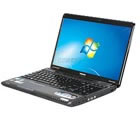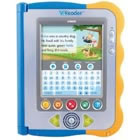HOUR 3:
Tech News & Commentary
Norman in Chattanooga, Tennessee listening on XM Ch.139 asked: “What’s the difference between a regular 10 megapixel camera and a 10 megapixel SLR camera? Does one take better pictures than the other?”
First, the pixel count isn’t really the important thing here. In fact, the number of megapixels these days is becoming less and less a factor. The fact that you have many more options for better picture-tasking with an SLR matters.
CNET did a good job when they asked “So, what is Digital SLR anyway?” The term digital SLR is short for Digital Single Lens Reflex, so named because these types of cameras use a mirror positioned behind the camera lens to direct light toward the viewfinder when you’re composing a photo. When you release the shutter, the mirror swings quickly out of the way, letting light from the lens travel straight to the sensor and momentarily blacking out the viewfinder.
The viewfinder in an SLR incorporates a prism is usually a pentaprism that flips the incoming image around so that you can see it right side up and bounces it onto the focusing screen where you see it.
For more information, tune in to Hour 3 of our podcast.
“Into Gaming Update” Weekly Feature with Mark Lautenschlager
Kerry in Decatur, Illinois listening on WZUS 100.9 FM asked: “I’ve heard that you could use your iPod Touch as a cell phone if you link your cell phone number to your Skype number, if you’re around Wi-Fi. I don’t know if that’s the only way, how well that works, or if there’s the possibility for something better in the future.”
In theory, yes, that would work. But it sounds like an awful lot of work. We don’t really see what you’d be gaining from that, except maybe saving some airtime minutes. In order for someone to call you on Skype from a regular phone, you’d need to purchase a phone number from Skype. That would either cost you $18 for three months or $60 a year. Now, if you typically go over your allotted minutes each month and end up paying for overages, maybe this would work out to be cheaper for you in the long run, but again, it seems like a whole lot of work to save just a little bit of money.
A couple of the potential “down sides” are: since the iPod Touch doesn’t have a microphone built-in, you can only use Skype with a headset, as you mentioned in your question, it would only work while you’re connected to a Wi-Fi network. If you have your cell phone forwarded to your Skype account and you are not connected to Skype, then you can’t get your calls. You would have to cancel the call forwarding on your cell phone each time you disconnect from Skype so that you don’t miss any calls or pay more money for a Skype Voicemail account.
So, to make a long story short, yes, it’s possible. Just may not be that feasible.
Bryan in San Antonio, Texas listening on Sirius Ch.108 sent us the following email and asked: “I have a D-link DIR-825 router, and I use an HP Compaq nc8430 laptop running Windows XP Professional SP2. The HP disconnects from Wi-Fi every 5 minutes or so like clockwork. The network connection is solid when directly connected with a network cable. I also use a Dell Studio 1737 (Windows Vista), which has no problems using the WI-Fi or directly connected. I want to add that I use the HP at work using their Wi-Fi and have no problems there. (Apparently, the HP doesn’t like my home’s D-Link.)
I have updated the wireless card’s drivers on the HP, but the result was the same. I’m hesitant to update the firmware on the router, as I have read D-Link’s support pages and none have mentioned my specific problem. Further, D-Link put out a firmware update in the past for this router that hosed up a bunch of units and couldn’t be backed out until they finally released the next firmware update. I’d like to avoid that since the router is technically working.
I’ve considered getting an AC-outlet solution to connect my router and my laptop, as well as to connect an Xbox 360 to watch Netflix. I don’t know what’s a good and cost effective choice. What would you recommend to fix my router problem, as well as a possible AC-connectivity solution?”
The D-Link DIR-825 wireless router is their “Extreme N” router that supports “Draft 2.0” of the 802.11N standard. Just to give you an idea of where that version of the standard was, Draft 2.0 was approved in March of 2007. In July of 2009, 802.11N went final with then-current draft 11.0 being ratified. In theory, final devices are supposed to be backward compatible, but in practice, many are not.
This router is a dual-band router, meaning that it supports both 2.4 GHz and 5 GHz radios in the same device. This is generally considered a good thing, as you can configure your network to put the 802.11N devices on the 5 GHz band and run a mixed mode support of 802.11B and G devices on the 2.4 GHz band. Again, however, this can lead to connection problems when a device hunts for a signal.
The HP Compaq NC8430 supports 802.11 B and G standards, but not N. The Dell Studio 1737 is a more recent model, and came both with a Dell Wi-Fi card that supported only the B and G standards, and the Intel 5100 Wi-Fi card that also supported N. Depending on which card was installed in your Dell, you may or may not have the faster N standard (which can reach speeds of 600 megabits per second in some cases, much faster than the G standard of 54 megabits).
For more information, tune in to Hour 3 of our podcast.
Guest in this hour:
Gary Shapiro, President & CEO – Consumer Electronics Association (CEA)
On our “Into Tomorrow” Facebook page, we offered a side by side look at the new Motorola Droid 2, which came out last week, vs. the original Droid. We asked you if you were planning to get one.”
Tune in to Hour 3 of our podcast for more details.
Al sent us the following email and asked: “I have been out of commission for about 17 years suffering the effects of poisoning and paralysis and most fully woke up about mid January this year, going on my first extended trip, which is about a 24 hour plane trip and would like a device to entertain myself, music/video, etc.”

There are many devices out there that will entertain help to yourself on a plane. One device that is highly recommended is the iPod Touch if you have a computer that you can access iTunes with.
With it, you can play with apps, watch TV shows, videos, movies, listen to music, and more. Also, you can access the Internet through Wi-Fi on all phone carriers, and if you have AT&T, you have access to 3G Internet.
For more information, tune in to Hour 3 of our podcast.
If you have any questions about any of this week’s show info, please email us here.
Into Tomorrow Product Spotlight with Rob Almanza
Are you ready to show off your tech gear at school? In case you need some suggestions, here are some of our favorite products for back-to-school this year.
 1) Laptops always seem to make it on student’s wish lists. This year it’s all about the cores (aka the brains!). Intel’s Core i5 and i7 processors are making laptops more powerful than ever. We ran across a really good deal at Newegg.com, where we found a powerful Toshiba laptop.
1) Laptops always seem to make it on student’s wish lists. This year it’s all about the cores (aka the brains!). Intel’s Core i5 and i7 processors are making laptops more powerful than ever. We ran across a really good deal at Newegg.com, where we found a powerful Toshiba laptop.
TOSHIBA Satellite A665-S6058 NoteBook
– 4GB of RAM
– 500GB Hard Drive
– Intel Core i5 Processor
– $850 at Newegg.com
– Click Here
Most of you know, I’m a Mac fan. Apple’s Mac computers, that is. So, check out the MacBook Pro. While it does cost more, the 15” version has a Core i5 processor like the Toshiba, with a more solid operating system. What I love most, is how fast it is and the power usage you get out of its battery. I was impressed by it after using my MacBook Pro during a flight back from LA to Miami (about 5 hours) on battery alone! By the way, Apple has a student sale now thru Sept. 7th, 2010 where you get a free iPod Touch when you buy a Mac for school/college. More details on that here.
If you’re not a Mac fan, but would like to have a sexy laptop like the Macbook Pro, then look into an HP ENVY 15 Series. Customizable to your needs, it starts at just under $1100. Learn more here.
2) Apple iPad for College
The iPad is still a hot item! It’s great for college students for their note taking and Internet browsing needs. Plus, the apps make it even more productive. It’s all about the apps! However, we remind you: It’s not a laptop replacement, but certainly more portable! The WiFi-only version costs less than the 3G version (at least $129 cheaper), starting at just $500. Keep in mind, you’ll always be on the lookout for hotspots around campus. Unless, you want to pay AT&T for a data plan. Learn more here.
This is great for the little ones! While you can read e-books (or “iBooks”) on the iPad, it’s not a dedicated e-book reader. For the kids, check out the VTech V.Reader Animated E-Book System. It’s a fun device for them to enjoy reading their favorite stories. Kids can touch and play as they learn reading skills, and can play interactive reading games. The V.Reader is available for just under $60.
This Week’s Prizes for Our Listeners
SleepPhones: A Sheep of Your Dreams Kit
SmartSwipe: Secure personal credit card readers for shopping online
Smith Micro Software: Copies of Anime Studio Pro 7
Total Training: Copies of Adobe Photoshop CS5 Extended: Essentials





